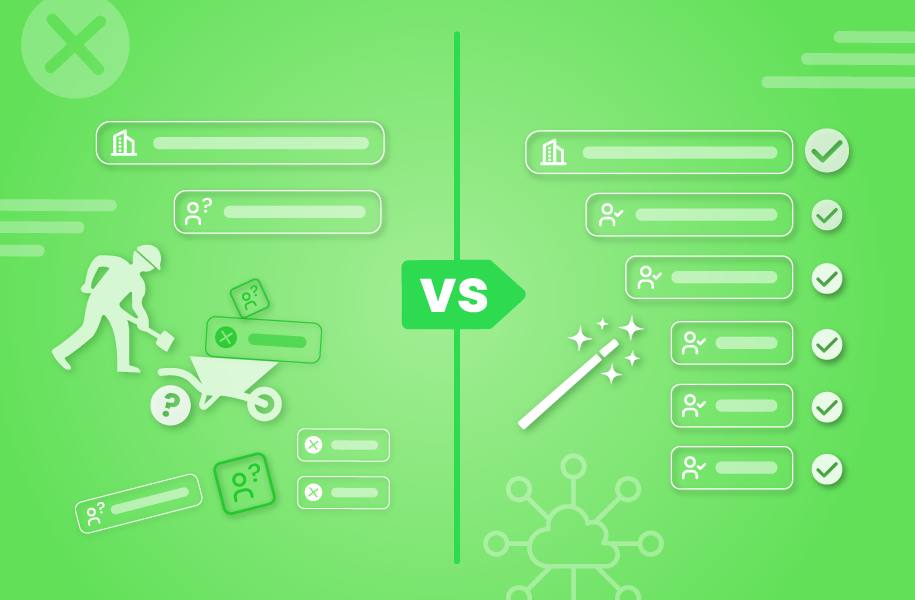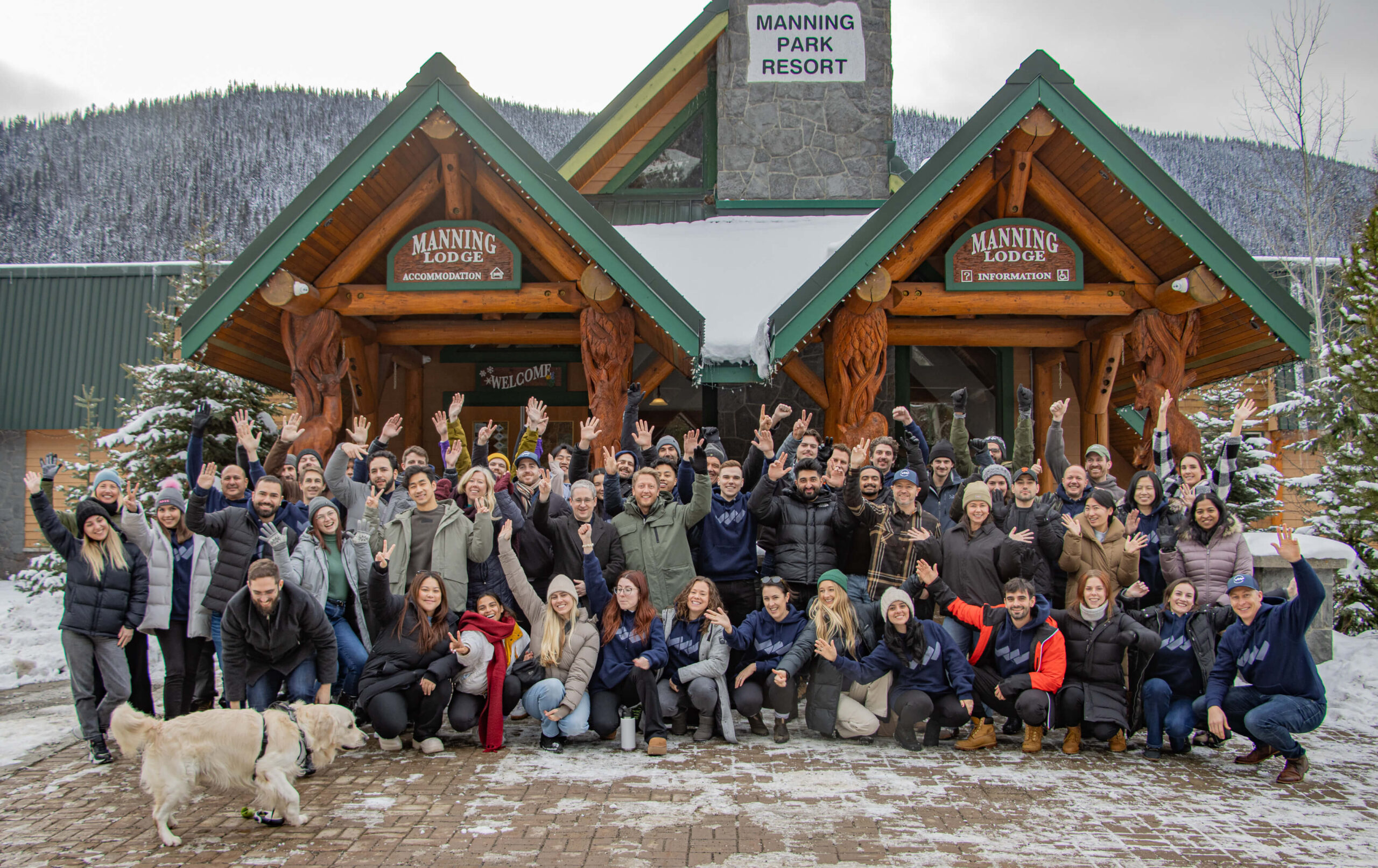Introduction
Whether it’s during your daily commute or in the midst of a sales cycle, no one likes a traffic jam.
The world of B2B sales is more competitive and resource-constrained than ever, and reps can’t afford to deal with sales bottlenecks that slow down or block the deal cycle.
But before we dive into how to fix them, it’s important to understand where these bottlenecks come from.
You might also like:
- 5 ways to improve win rates and run better deal reviews
- How does a relationship map help B2B sales teams close more deals?
- 4 ways to improve the marketing to sales lead handoff
What causes sales bottlenecks?
Sales bottlenecks are caused by various issues within the sales process or when the process isn’t carried out correctly. In most cases, it comes from process, data, or people.
On the surface, it may not sound harmful to your bottom line — but if left unchecked, your sales team will suffer from slower deal cycles or no deals at all.
Sales teams wasting time on non-selling activities
According to Salesforce, sales reps spend 72% of an average week on non-selling activities.
Here’s what non-selling activities can include:
- Prioritizing leads/opportunities
- Researching prospects
- Preparation and planning
- Generating Quotes/Proposals and gaining approval
- Manually entering customer and sales information
- Administrative tasks
- Internal meetings and training
The more you do to minimize time spent on non-selling activities and maximize the time spent connecting with prospects and building relationships, the better.
Dirty data ruining sales productivity
44% of companies estimate they lose 10% of annual revenue due to poor quality CRM data.
When it comes to sales teams, dirty data can cause several pitfalls such as:
- Working on an account owned by another sales rep
- Wasting time digging through duplicate records (non-sales activity)
- Finding the next accounts to prospect
- Misguided or ineffective follow-up due to incomplete data on incoming leads
No matter what the cause is, RevOps and SalesOps teams need to be able to identify and solve these sales bottlenecks, empowering reps to spend less time on non-selling tasks and more time closing deals.
Lack of alignment across sales, marketing, and customer success
Manual or broken processes hurt your sales, marketing, and customer success teams. When the handoff process is slow or done incorrectly, this can create bottlenecks and prevent a lead from becoming an opportunity, or an opportunity into a customer.
On the other hand, alignment between the different teams ensures that they can better prioritize leads and customers, manage and clean data, cross-sell and up-sell effectively, and keep go-to-market strategies up to date.
Complex decision-making processes
With the average size of a B2B buyer committee being between six to 10 decision-makers, it’s no secret that it’s getting harder for sales teams to close deals.
When sales reps need approval from multiple stakeholders, each with their own needs and expectations in a solution, navigating these players can significantly slow down the sales cycle.
How to solve sales stage bottlenecks
Between broken processes, dirty data, and complex buyer committees, how can companies solve these bottlenecks for good?
Let’s dive into how you can break through these bottlenecks and close more deals.
Wasted time? Leverage AI to give your sales reps time back
56% of businesses are already using AI to improve their business operations.
When your sales reps spend nearly three-quarters of their week on non-selling activities, leveraging AI can eliminate some of the manual tasks that hold them back.
Mark Turner, VP of Revenue Operations at Demandbase, uses AI to help his sales teams:
- Collect sales insights on accounts
- Surface product insights
- Automate data entry (giving sales reps time back)
- Notify sales reps in real-time
- Ask questions and get answers
Pro tip: For starters, you could capture potential sales insights and automate with conversation tools like Chorus or Gong. Every call in Gong can be captured as a custom object called Conversations.
Each conversation in Salesforce includes:
- Link to Opportunity
- Link to Account
- Link to Contacts that already exist in your org
- Content that was discussed (i.e. pricing, churn, etc.)
- Interaction stats (i.e. interactivity, talk ratio, etc.)
- Participant list
Learn more by downloading our free guide on low-effort, high-impact use cases for AI in RevOps.
Dirty data? Go from a dirty CRM to clean with deduplication
If you’re not merging duplicate records in your CRM upon entry, you’re creating a wave of data proliferation. This will slow down your sales reps by plaguing their CRM with duplicates and making it difficult to route leads to the right record in the first place.
Matching and merging records will help prevent new duplicate records from being created and keep your database clean on an ongoing basis.
Salesforce can identify duplicates by using a combination of matching and duplicate rules. The challenge, however, is that native Salesforce deduplication can result in you losing new information or being overwhelmed by manually managing incoming duplicates. Salesforce also doesn’t provide a way to efficiently mass merge duplicates.
Third-party Salesforce apps can help clean your CRM both reactively and proactively. The reactive approach will help in situations where you want to cleanse a large number of existing duplicate records that require matching and merging. On the other hand, proactive deduplication will help prevent duplicate data by matching, merging, and converting records upon entry.
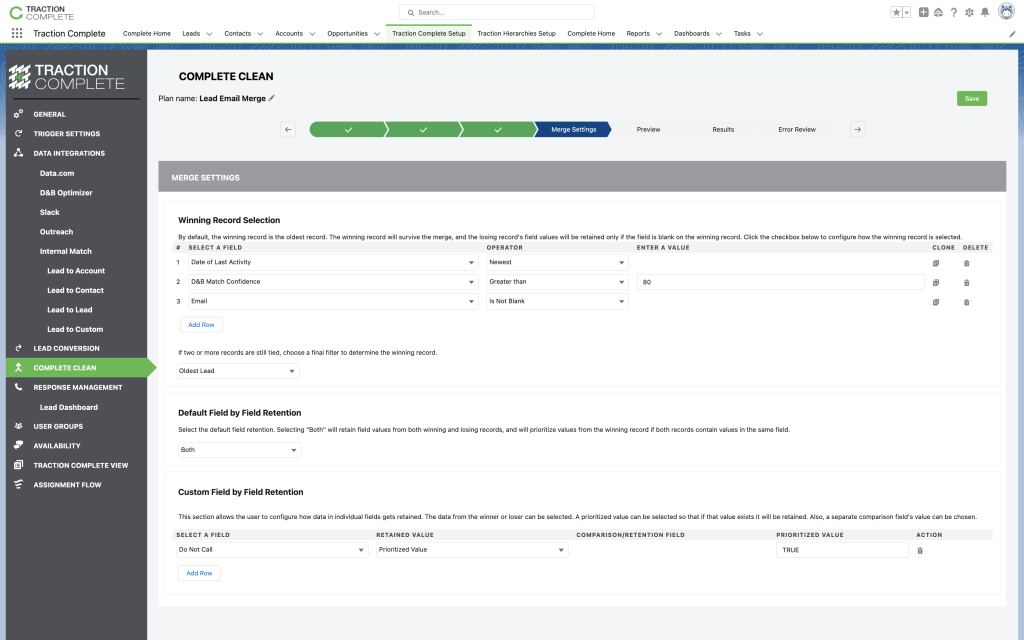
Lack of alignment? Automate manual processes and track the different sales stages
Tracking leads at each stage of the sales cycle is a great way to continually build and improve on the lead handoff between marketing and sales teams.
One way to level up that strategy is to also use a multi-SLA timer to measure the time between each stage of the sales process.
Not only will you be able to track various times between stages but also segment times by sales rep and source, as well as measure SLA metrics on different objects such as leads, contacts, opportunities, and cases.
Sales leaders can also use multi-SLA timers to understand the average closing time when selling to different ICPs and compare these times with win rates.
The timers can also be used to A/B test and understand how changing, removing, or adding a step in the sales process can impact the speed and likelihood of a deal closing.
Automation can also be used to streamline manual processes across the entire buying cycle, such as:
- Lead routing
- Lead-to-account matching
- Merging and resolving duplicate records
- Validating data enrichment or field validation
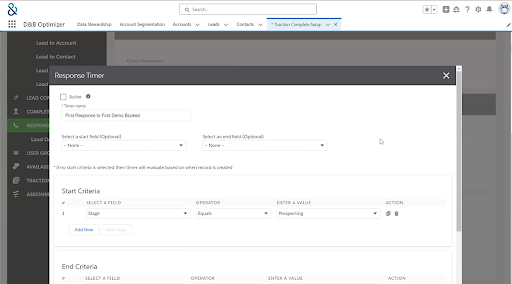
Complex buyer groups? Gain a true understanding of buying committees with relationship maps
A relationship map, also known as an influence map, allows users to track the organizational structures within a company, the relationships within them, and the amount of influence that individuals have on a deal.
They can help sales reps close more deals by:
- Adding more contacts to an opportunity (multi-threading their deals)
- Tracking partner relationships that are in play
- Connecting with additional champions
- Navigating and working through blockers
- Making revenue growth more efficient and predictable.
When relationship maps are visible in Salesforce, they empower sales managers to provide better coaching and more efficient deal reviews. They can also benefit account managers and customer success teams once the deal has closed.
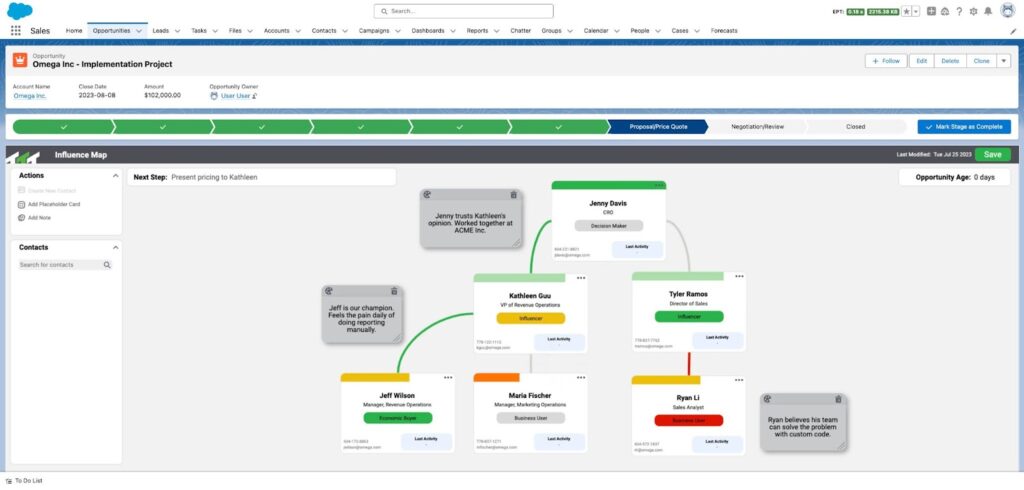
Conclusion
Whether it’s caused by non-selling activities, dirty data, or broken processes between different sales stages, your reps can’t afford to deal with sales bottlenecks that are slowing down the deal cycle.


